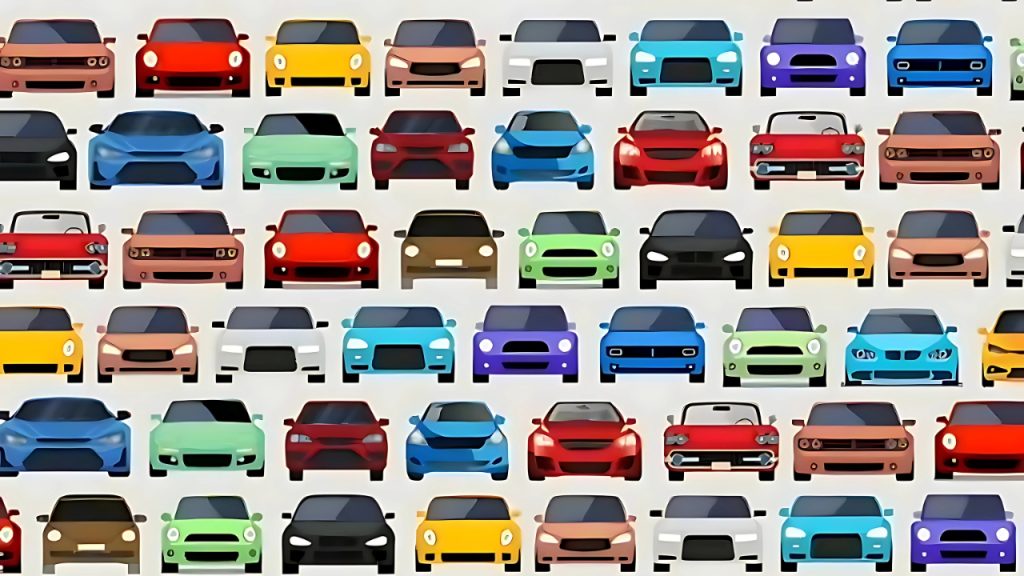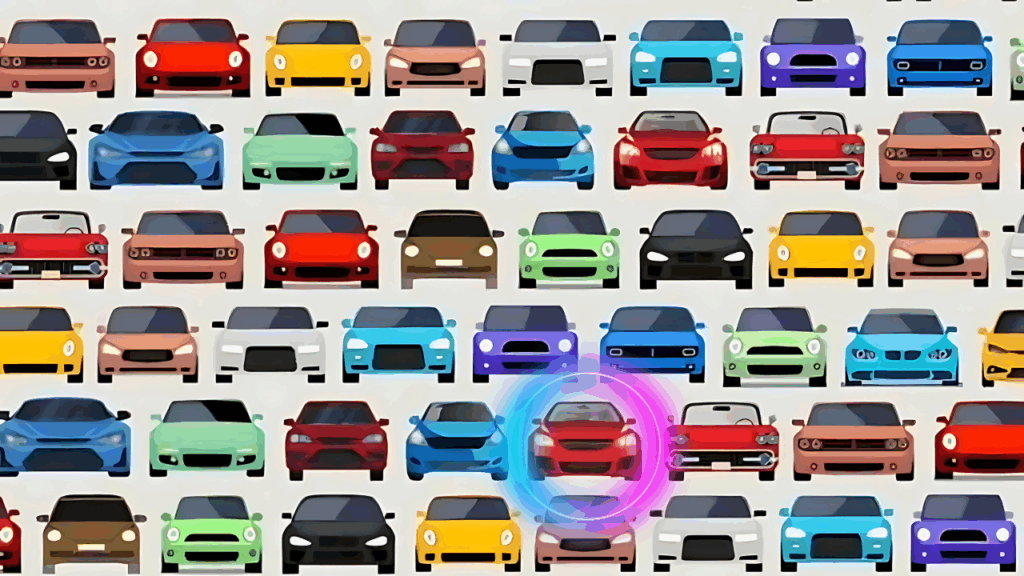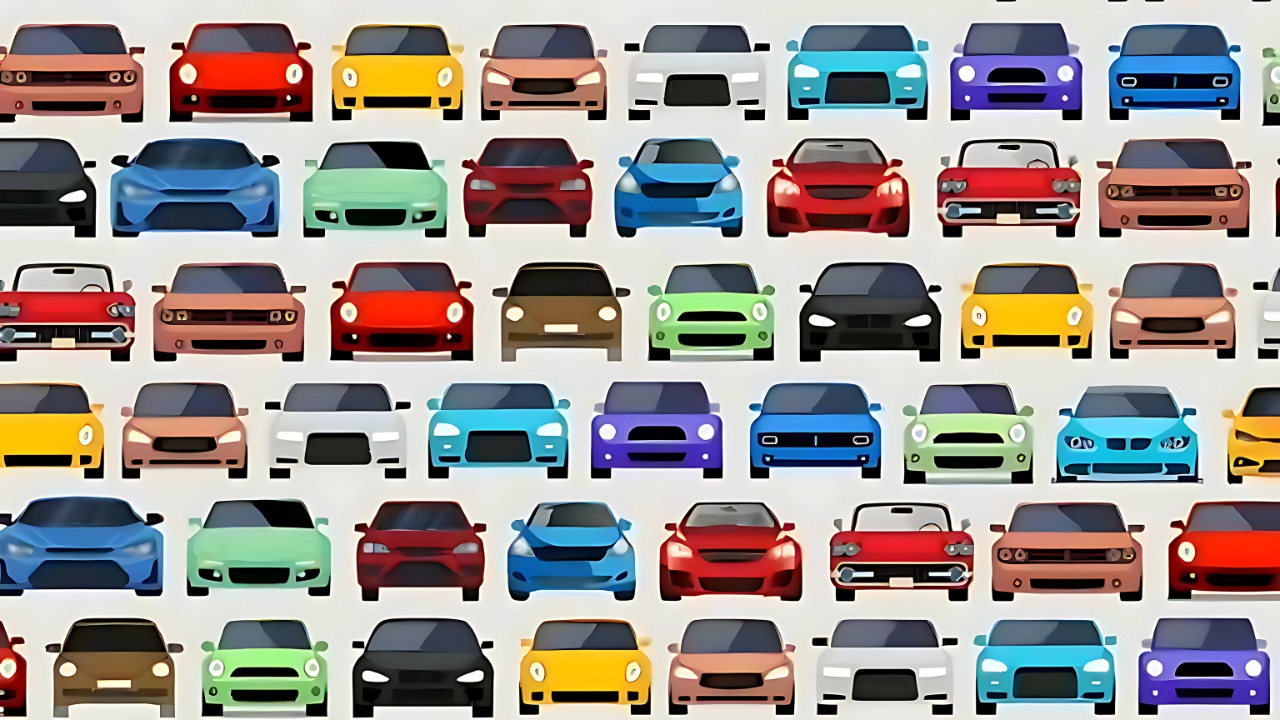Optical illusions have captivated minds for generations. These clever images and patterns trick our brains into seeing something that isn’t quite there, playing with how our visual system processes information. Whether it’s ambiguous shapes, hidden objects, or subtle differences, optical illusions are more than just fun—they’re a mental workout that can sharpen observation, focus, and problem-solving skills.
The Vehicle Optical Illusion: How It Works
Imagine a grid filled with colorful cars—sedans, SUVs, convertibles—all looking nearly identical at first glance. But hidden among them is one car with a small but significant difference. Maybe its headlights are on, a side mirror is missing, or the wheel design stands out. Your challenge is to spot that odd car as quickly as possible.
This type of puzzle is known as a “spot the difference” challenge. It’s simple in concept but tricky in execution, making it a favorite for all ages. The time limit—often just 6 to 30 seconds—adds excitement and tests your ability to process visual information under pressure.

Why Optical Illusions Are Perfect for Everyone
These puzzles are universally appealing. They require no special tools or expensive materials—just an image and your eyes. Families, classrooms, and workplaces can all benefit from the mental stimulation and sense of achievement that comes from solving an optical illusion.
Optical illusions also offer a quick mental break from daily routines. They encourage critical thinking, boost concentration, and can even reduce stress by providing a meditative focus on a single task.
The Science Behind Spotting Differences
Spot-the-difference puzzles engage multiple brain regions. The visual cortex processes the image, the prefrontal cortex handles decision-making, and the parietal lobe manages spatial awareness. This coordinated effort improves focus, memory, and attention to detail over time.
Our brains are wired to recognize patterns and make quick assumptions, which is why these illusions are so effective. The uniformity of the cars tricks the brain into overlooking subtle differences, a phenomenon called “visual masking.” The time pressure further increases cognitive load, challenging even high-IQ individuals.
Tips for Solving the Vehicle Optical Illusion
-
Scan Methodically: Divide the image into sections and compare each part of the cars.
-
Look for Symmetry Breaks: Differences often disrupt symmetry or balance.
-
Focus on Small Details: Pay attention to minor elements like headlights, wheels, or outlines.
-
Take Your Time: Accuracy matters more than speed—relax your eyes if you’re stuck.
-
Use Peripheral Vision: Soften your gaze to let anomalies catch your eye.
Why Vehicle Enthusiasts Love This Puzzle
For car lovers, this optical illusion is especially thrilling. It combines a passion for automobiles with a mental challenge, honing skills useful for mechanics, designers, or anyone who enjoys spotting the smallest details. You might notice sleek lines, unique grille designs, or tire patterns as you search for the odd car out1.
How to Create Your Own Vehicle Optical Illusion
Want to make your own puzzle? Here’s a quick guide:
-
Choose a Base Image: Pick a clear photo or illustration of a vehicle.
-
Make Copies: Duplicate the image to create a grid.
-
Add a Subtle Change: Alter one car slightly—change a headlight, remove a door handle, or tweak a wheel.
-
Test Your Puzzle: Share it with friends and adjust the difficulty based on feedback.
-
Share the Fun: Post your puzzle online or challenge others to beat your time.
Answer

Take the Challenge to the Next Level
-
Time Trials: Set a timer and try to beat your best time.
-
Multiple Differences: Add more than one difference for extra difficulty.
-
Group Play: Turn it into a game with friends or family.
-
Themed Puzzles: Try illusions featuring vintage cars, race cars, or trucks.
| Feature | Description |
|---|---|
| Challenge Type | Spot the difference |
| Main Goal | Find the misfit vehicle in the grid |
| Average Time | 5–30 seconds (varies by skill) |
| Benefits | Improves observation, focus, and problem-solving |
| Suitable For | All ages |
| Tools Needed | Image, eyes, and optionally a timer |
FAQs
1. Why are optical illusions beneficial?
They improve pattern recognition, attention to detail, and problem-solving skills.
2. How can I get better at spotting the odd vehicle out?
Practice regularly, scan methodically, and focus on small details.
3. Can children enjoy vehicle optical illusions?
Yes, these puzzles are suitable and fun for all ages.
4. What brain areas are involved in solving these puzzles?
The visual cortex, prefrontal cortex, and parietal lobe all play key roles.
Vehicle optical illusions are more than just a fun distraction—they’re a powerful tool for mental exercise and cognitive growth. Whether you’re a car enthusiast, a puzzle lover, or just looking for a quick brain boost, these challenges offer something for everyone. So, take a moment to test your skills and see how quickly you can spot the odd car out!
